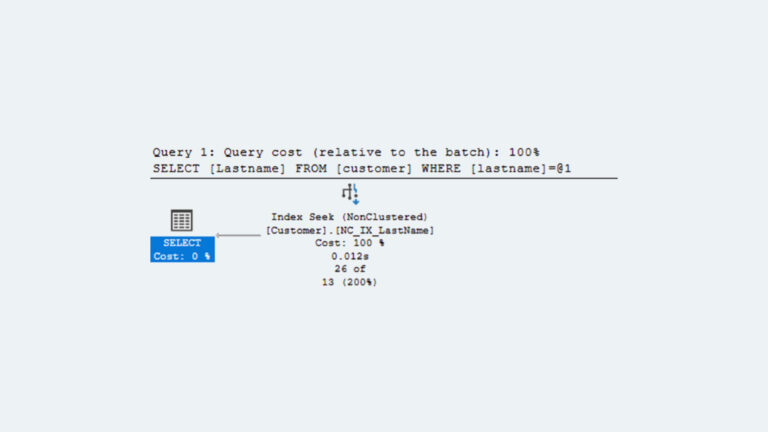Dave Welch (@OraVBCA), CTO and Chief Evangelist
A Former Professional Life
The Product Integration Group was established at a former employer by a visionary president. He understood the need for something that went beyond functional quality assurance—a team that proved and documented all the aspects of installation, operations, performance, scalability, and business continuity, and that also determined appropriate hardware platform, sizing, and third party software licensing.
The team’s prowess was such that it even solved a problem for IBM’s Poughkeepsie RS/6000 engineering team (that had eluded IBM) having to do with node fencing. By the time I had been recruited as technical manager, the team was fiercely proud of their “PIG Team” moniker.
Accidental Entrepreneurs
Our employer cut off a mainframe to client-server replatforming project 3.5 years into a 4-year project due to the acquisition of a software asset that had yet to go production. We cautioned that the employer would later reverse their decision and reboot the project at great incremental expense and competitive disadvantage due to lost time. Alas, the decision to cancel the project held. We were offered jobs in operations. Nothing against ops, but it simply wasn’t our area of interest. We had exhausted every option for remaining together and plying our wares as a team, and I imagine the team had resumes on the street, but I couldn’t bring myself to update mine.
I invited select team members to an after-hours meeting to explore the possibility of forming our own company. After three weeks of after-hours formation activity, we determined that we had a viable business plan. I still remember where we were on the road, headed West in Wyoming, when I talked my wife into making the leap. At the time, we were the only couple involved who had children.
Then In late April 1998, I tendered resignations for myself and the others who were also leaving to join the new company. We then moved into three months of project-managed full time formation activities. It didn’t take long for people to discover we were on the street. One scaled financial services organization called to offer us full time development work to consume the entire team for three months. If memory serves, there was a noticeable gasp on the other end of the phone when I explained we were too busy at the time to be distracted with revenue.
Whatever we did during formation, allusion to pig or swine in the business name was paramount. The most difficult thing we did during our formation period was coming up with a company name. We had to allocate time to it on a regular basis. There were times when everyone was staring quietly at the floor. Someone would share an idea and the others would groan. Try as we might, we couldn’t find a professional way to integrate pig or swine into a business name. Then suddenly former team member Jim Storc got up and walked across Mike Stone’s living room floor to the white board on an easel, chuckling all the way. He wrote, “House of Brick,” left the marker on the tray, and walked back to his seat, still chuckling. Someone said, “He’s serious.” Everyone was laughing at that point. “We know.” Mike ran upstairs to his PC. “Check for the URL,” someone yelled. “It’s available,” Mike yelled back. “Book it,” someone shouted. “I already did,” Mike replied.
Our marketing and graphic design contractor loved “House of Brick” because it was organic. And, very unintentionally, House of Brick also characterized the system stacks we had designed and reviewed.
At that time, the investment advisory newsletter Investech promoted substantial evidence that NASDAQ was in a bubble and things weren’t going to end well. Accordingly, we initially focused on business survival, not growth. We had been successful as a hierarchical team, but could we translate that into success as partners?
The three key books that we leveraged during our formation:
- The E-Myth Revisited – Michael Gerber
- Teaming Up – Paul and Sarah Edwards
- Profit RX – John Haskell “Dr. Revenue” – our marketing and sales consultant
There are two key ways we encouraged focus into the business. First, we identified 15 ways we were, or could become, qualified to generate revenue. Next, we trimmed the list down to five. Finally, we went in search of partners in legal, HR, sales, graphic design, marketing, insurance, and accounting. After twenty years, we are still proudly affiliated with Baird Holm Law Firm, Koch Insurance Agency, and the accounting/financial firm of Daniel Grieb PC. Don Geier at MSI Systems Integrators (now merged into Sirius Computer Solutions) was our first partner introduction, and we have cherished our relationship with Don. He has been consistently complimentary over the years about House of Brick’s remarkable focus.
Next we worked on branding goals. Within two years we wanted to have 75% of director-level personnel in the Omaha region, when asked who they think of in regard to Oracle on UNIX, mention House of Brick in their top three. Our marketing consultant specified that our branding objectives would minimally require frequent “lunch and learns” and a substantial quarterly newsletter, and we swallowed hard and committed. Two years out, House of Brick was so well branded that we scrapped our plan for a third party validation survey. There is every possibility that in the early years our brand was better than our sales capability. If that was true, it may well have been an inversion compared to most organizations where sales can be ramped quickly, but branding takes time.
The founders agreed that what we had learned during our three-month formation period was more valuable than our university degrees.
A Different Way of Doing Business
Out of the chute, House of Brick signed the Oracle partner agreement. We had customers that insisted that they be able to purchase Oracle license from us, since they trusted us. However, a number of years later we elected not to renew our Oracle partner agreement.
Within our first year, Mike Stone led a diagnostics team at a scaled financial services client. House of Brick had not been involved in the pre-production configuration, and we were called in the morning of go-live on an emergency basis. The system stack would not come up on production day, but we had the problem solved within three hours.
I recall one brokerage industry customer that called us during our first year. They were running SQL Server on Windows and were having substantial problems with month-end performance and quarter-end stability. We tried to explain that we were not a SQL Server team, but they held firm. Their reply: “A database is a database. Get over here.” So two of us met with them for an hour in their board room, listening to their problems, taking notes, and brainstorming solutions. (We would see that technique described in Lencioni’s Getting Naked book when it was published later.) With that, off they went to solve both of their challenges. While we never generated a dime of direct revenue from them, they became a great referral source.
Just a few months after we began offering our services, our former employer approached us with news that it was indeed rebooting the replatforming project and wanted us back. But, by this point we were only available on a contractual basis, since we had established an enviable customer base in just a few short months.
Another project that comes to mind was diagnosing an Oracle Forms problem for a regional retailer. During the onsite kick-off meeting, David Woodard was having a look at the screen, noticed a simple solution to the problem, pointed it out, and asked those in the conference room for permission to make the change. The customer’s staff looked at each other and nodded approval. We left within an hour and a half of when we arrived. Such experiences were initially a challenge for the newer House of Brick sales team who were concerned that the majority of the hours on the statement of work were going to go unused and therefore not be billed.
The most rewarding engagement I have ever been involved with was probably a decade ago at West Central Missouri Community Action Agency in Appleton City, Missouri. This is a town of just over 1,000 people. In this modest environment with very limited resources, we felt like we were really making a difference for the organization and the citizens it served.
The single book that I believes best reflects the House of Brick culture is Getting Naked by Patrick Lencioni. Key concepts are to start with listening and to begin consulting rather than leading with a canned binder or slide deck. If we don’t know the answer, we say so. The consulting begins freely even before a statement of work is in place. House of Brick has branded through the provision of free, immediately usable information.
Remarkable People
We have been blessed to recruit leadership team members and vice presidents Jim Ogborn, Orfa Link, and Brenda Vair. All three had long-standing professional relationships with House of Brick principals. How we managed without them during our first decade is beyond me.
I believe the most impactful thing that has happened in House of Brick’s 20-year history was the passing of sales person Michelle Boswell. Michelle had outlived her cancer prognosis by three fold, and we were blessed to have been involved with her. We dedicated the entire Bricks newsletter issue to this remarkable woman prior to her passing.
Another important milestone happened a decade ago, when we were introduced to Nathan Biggs. It took a year for him (and us) to determine if the fit was right. It was, and a year later Nathan became a partner. Months later, I suggested to my partners that I resign my position as President and nominated Nathan as CEO. House of Brick has thrived under Nathan’s leadership.
Industry Leadership and Experience
2005 was a watershed year for us. David Woodard walked in the door with a copy of VMware Workstation, and we all thought we had died and gone to heaven.
Shortly thereafter, David encountered grumbling from UNIX admins on the first day of a BEA Tuxedo class he was teaching over how the class’ lab image was Windows. That evening he configured and broadcast Linux lab images on his VMware GSX-enabled notebook. The students loved it.
In Q1 2006, our customer with thousands of retail food services outlets went live with our configuration of all of their Oracle E-Business Suite tiers on VMware. With that, House of Brick was born as a tier-one Oracle on VMware team.
The following year at VMworld 2007, Jim Hannan and I were honored to deliver what happened to be the world’s first Oracle on VMware session. It didn’t take long for House of Brick to be openly acknowledged by VMware Corporation as the premier, pioneer partner in the Oracle on VMware space.
That same year in the Oracle Open World exhibit hall, House of Brick presented the VMware Oracle Solutions Lab. We were doing live demos of hot E-Business Stack cloning, VMware HA, and hot-adding RAC nodes, all of it with attendees off the aisles actually running the activities. The aisle in front of the booth was often packed with conference goers watching each activity on overhead displays. At the time, I thought the market was ready to jump at Oracle on VMware. However, I had seriously underestimated the potency of the FUD Oracle had that year begun injecting into the Oracle on VMware market.
In 2011, VMware approached House of Brick to produce a partner enablement documentation set, called the Accelerator, for both Oracle and SQL Server on VMware. House of Brick agreed to produce the materials even though the Accelerators’ end market was VMware partners in competition with House of Brick. Shortly thereafter, House of Brick began presenting those materials to our competitors at VMware Partner Exchange, and we continued to do so for several years.
House of Brick was well represented at VMworld US for two years in a row by clients chosen for Oracle customer experience panels.
- 2013 – Two of the four panelists were House of Brick customers.
- 2014 – The number had increased to four of four panelists.
A line of business that has evolved substantially for House of Brick is Oracle licensing services. Our demand has been so high that three years ago, we introduced Managed License Support Services.
In The E-Myth Revisited, author Michael Gerber cites the well-known failure rates for small business: 40% fail in the first year. Of those who survive one year, 80% fail in five years, and of those who survive five years, another 80% fail. House of Brick planned to beat those odds and I’m happy to say we succeeded.
Thank You
While there may only be four names listed on our company incorporation documents, there are eight partners in this business. I am humbled by the faith and trust our spouses have extended to us.
Having lived the House of Brick experience, Mike Stone once self-assessed that he was virtually unemployable in a traditional organization. I can relate.
As much as I would like to comment on how each and every team member has impacted me personally and professionally, that would be inadvisable here. Suffice it to say that I am most humbled to be involved with the House of Brick team. That feeling of humility increases with the passing of time as my self-awareness increases. So to my team members, I express my most heartfelt thank you.
Happy 20th Anniversary House of Brick!






